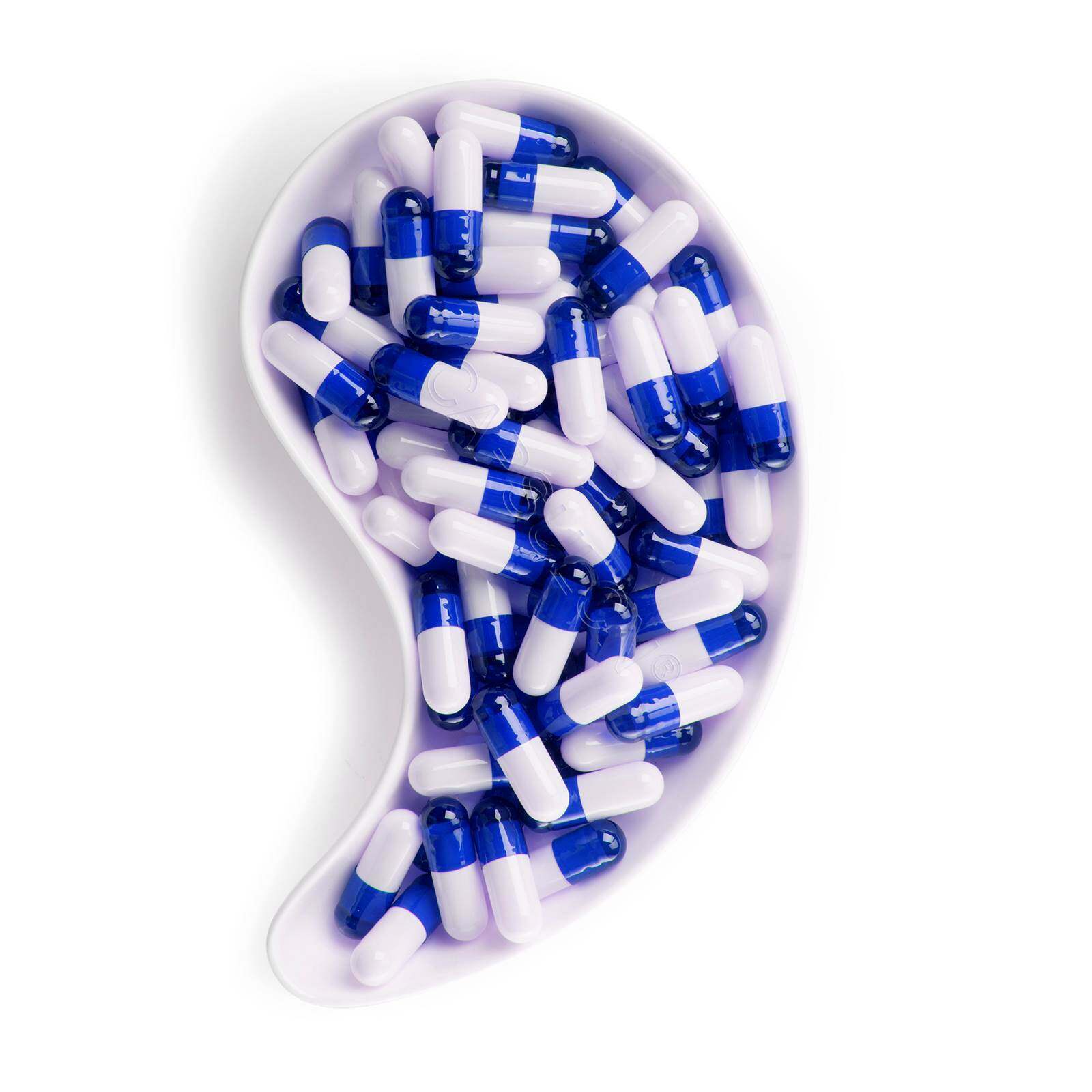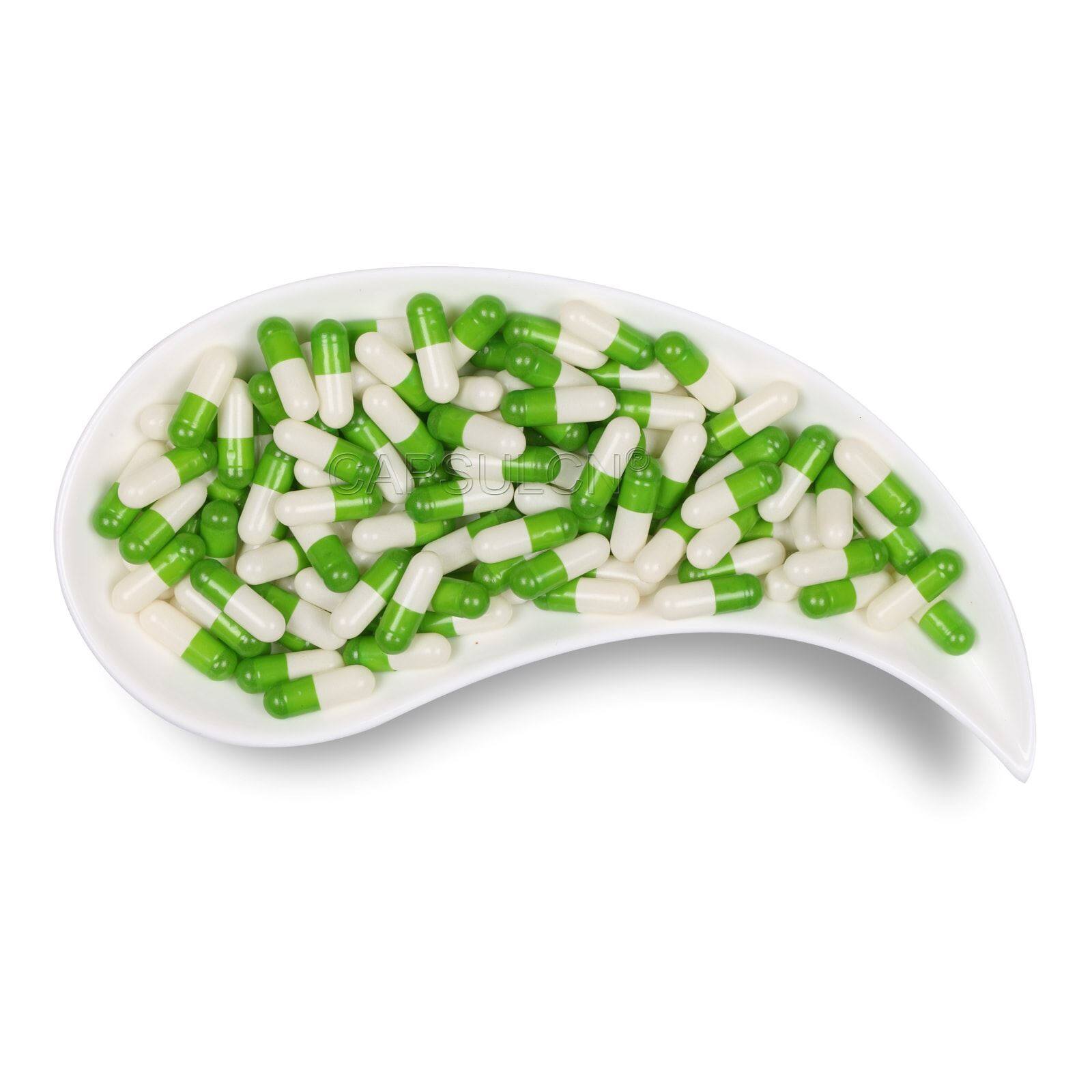The raw materials of empty capsules can generally be divided into gelatin capsules and vegetarian capsules.
 |
 |
| Gelatin Capsule | Pullulan Capsule |
(From the picture, it is hard to find its differences)
Gelatin is a white or light yellow, translucent, micro-glossy sheet or powder that is degraded by collagen in connective tissue such as animal skin, bone, and sarcolemma. It is a hydrophilic colloid of macromolecules and is a low-calorie health food with high nutritional value. This material can generally be used to make confectionery additives, frozen food additives, and the like. In addition, gelatin is widely used in the pharmaceutical and chemical industries.
The water and inorganic salts in gelatin account for about 16%, and the protein content accounts for more than 82%. Similar to the parent collagen, gelatin is also composed of 18 kinds of amino acids, among which the content of the sub-amino acids Pro and Hyp is high. The triple helix structure in gelatin gel mainly relies on intramolecular hydrogen bonding and hydrogen bonding hydration. Pro-NH, Hyp-OH and other amino acid side chain groups and water molecules can form hydrogen bonds, which is beneficial to the triple helix. The structure is stable. It is an effective protective colloid that prevents the accumulation of crystals or ions and stabilizes the heterogeneous suspension as an emulsifier in oil-in-water dispersion formulations.
Most capsules are made of gelatin. This grade of gelatin meets the stringent requirements for pharmaceutical products. In general, the capsule manufacturing process has the following steps. First, a layer of gelatin film is formed on a stainless-steel mold. The capsule is formed after the film has dried and hardened. Finally take it off the mold. The mold is available in two sizes for the capsule body and the capsule cap (slightly larger).
Another large class of capsules are plant capsules. The outer shell of a plant capsule is generally prepared from a material such as starch, HPMC, Pullulan. With the popularity of natural and vegetarian concepts, this vegetarian capsule has been widely filled in the pharmaceutical market in many countries around the world. Vegetarian capsules can be divided into various types, such as pullulan capsules and HPMC (Hydroxypropyl methylcellulose) capsules. Pullulan is an extracellular water-soluble mucopolysaccharide similar to dextran or xanthan gum produced by fermentation of Aureobasidium pullulans. It was in 1938 by R. A special microbial polysaccharide found by Bauer. Due to the unique structure and properties of the polysaccharide, it has broad application prospects in the pharmaceutical, food, petroleum, chemical and other industries. Because it can be degraded and utilized by microorganisms in nature, it will not cause environmental pollution, so it is known as pollution-free plastics.
Studies have shown that the soft capsules containing pullulan as the main gel of the capsules are better than the gelatin as the capsule gel after the storage time, in the point of the time of disintegration, the oxidation of the contents, the adhesion and the oil leakage. HPMC acts as a binder (thickener), coating polymers, bioadhesives, and solid dispersions to enhance solubility. Studies have also shown that future improvements in the production and filling of HPMC capsule shells and their improved in vivo/in vitro dissolution will ensure that they are superior to hard gelatin capsules.
Whether it is gelatin capsule or vegetarian capsule, it is a food-grade material under strict standardized production, and it has no harm to the human body.


